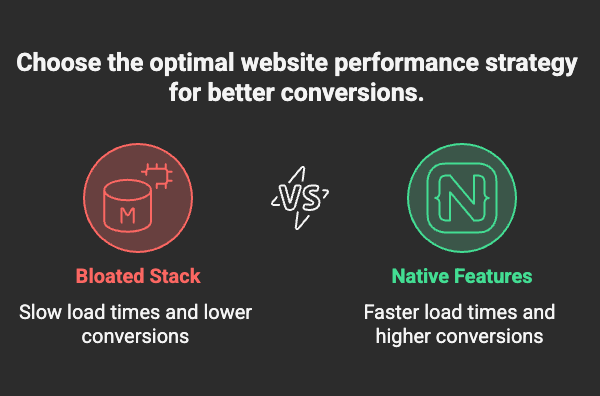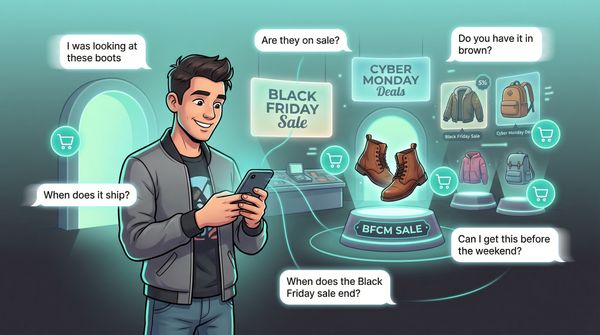Tech Stack Tune-Up: Cut Shopify App Bloat & Boost Profits

In 2025, bloated app stacks are quietly eroding margins. DTC brands are realizing that “more tools” doesn’t mean more growth—just more drag. Thanks to Shopify’s Summer ’25 Edition, you no longer need to duct-tape half your backend together. The best operators are simplifying, not stacking (Tapcart).
Why It’s Time to Audit Your Shopify Stack
Running a mid-sized Shopify store often means juggling dozens of apps—most of which promise revenue, few of which deliver. Operators are now flipping the script: instead of chasing tools, they’re building leaner foundations and replacing third-party functions with native Shopify features (Shopify).
“Successful Shopify brands are simplifying—focusing on high-impact tools and trimming the fat.”
— Shopify 1%, June 2025
Native Features That Replace Third-Party Apps
Shopify’s Summer ’25 Edition launched over 150 new features. Several directly replace commonly used apps—cutting costs and boosting site speed in the process.
| Function Replaced | Shopify Native Feature | Source |
|---|---|---|
| Page-builder apps | Horizon theme + AI Store Builder | FoxEcom |
| Loyalty + store credit apps | Built-in store credit via Shop Pay | KOTA |
| B2B apps | Native B2B 2.0 functionality | Absolute Design |
| Subscription & automation tools | Native workflows, AI content, built-in subscription billing | eCommerce Today |
| Product review platforms | Shopify’s free Product Reviews app | Shopify 1% |
Ben Attwood, founder of Clubhouse Skin, estimates he would’ve saved £5,000–£7,000 if Horizon had existed at launch (Shopify).
Why Site Speed Is Your Silent Profit Lever
More apps = more scripts = slower load times. Shopify now reports:
- 30% faster admin dashboard
- ~2 seconds faster checkout initiation (KOTA)

That’s not cosmetic—it’s cash. A 1-second delay can cut conversions by up to 20%. Operators are moving fast to replace pop-ups and checkouts with native, performance-optimized versions (Absolute Design).
What Top Operators Are Saying
This isn’t theory—it’s the new standard for efficiency.
- Jeremy Horowitz (investor): Million-dollar brands typically use just 3–5 core apps (Shopify 1%).
Operators are using fewer tools—and squeezing more from each one.
A Practical Stack Streamlining Checklist
If you’re not sure where to start, here’s how top brands are approaching tech stack cleanup:
| Step | What to Do |
|---|---|
| List All Apps | Note purpose, cost, and whether it integrates with Shopify natively. |
| Eliminate Redundancy | Remove any overlapping or underused apps that duplicate functionality. |
| Replace with Native Features | Use Shopify’s new tools for B2B, subscriptions, store credit, and more instead of external plugins. |
| Quantify ROI | Keep only tools that measurably boost conversion, AOV, or operational efficiency. |
| Audit Performance | Use Shopify’s Core Web Vitals to identify apps slowing your site and costing conversions. |
| Consolidate | LiveRecover—which recovers abandoned carts via real-time, human-powered SMS—can replace bulkier, multi-step recovery setups with a leaner, conversion-focused approach. |
The ROI of Going Lean
This isn’t just about saving on SaaS. The payoff is higher margins, faster sites, and simpler ops. Shopify’s VP of Product put it clearly:
“Our goal is to make complex workflows simple—so merchants can spend more time building relationships, not managing plugins” (Shopify).
A lean tech stack means:
- Fewer recurring charges
- Faster load speeds and conversion rates
- Easier ops for lean teams
- Cleaner data across fewer tools
Don’t Just Cut. Compound.
Tech bloat kills speed, profit, and focus. But stack discipline pays dividends. As the smartest operators have shown: simplifying doesn’t mean sacrificing functionality—it means unlocking it.
Start with one audit. Keep what performs. Cut what drags. Then reinvest that clarity where it matters.
Subscribe for weekly DTC insights.




